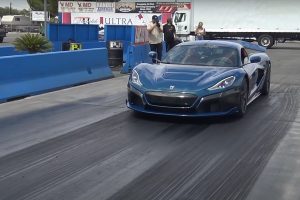Millennials and Zoomers (Gen Z) are collectively beginning to throw their financial weight around Wall Street. As they do, many analysts are noting how the market will be impacted for decades to come, with companies like Tesla experiencing high volumes of support from these age groups.
Younger generations are favoring stocks with high-risk, high-reward factors, according to Investor’s Business Daily, with Tesla being a top pick across the Millennial and Gen Z generations.
Millennials and Gen Z are set to inherit almost $70 trillion from boomers in the coming decades, and they’re also more focused on investing their money into environmentally- and socially-conscious companies than previous generations.
A recent study showed the stark contrast between emissions produced by gas cars and EVs across the supply chain. As the burgeoning electric vehicle (EV) industry continues to grow, so too do the investments of young people.
Forbes reports that broker Charles Schwab recorded 4 million new clients in 2021, with over half of them under 40. Investing app Robinhood has more than 15 million clients today, and the median age for the app’s userbase is just 31.
Despite investor concerns about high-risk, high-reward stocks and their volatility, as well as the accessibility of mobile investing, a study from the National Bureau of Economic Research lent some insight into how app investors handled the market during a March 2020 crash.
The study found that “investors on Robinhood did not panic during the market [March 2020] meltdown and acted as a market-stabilizing force.”
Tesla gained 36 percent in 2021’s Q4, despite a still-ongoing semiconductor chip shortage that plagued the entire electronics market, including legacy automaker Ford. Tesla also delivered 308,600 vehicles, which saw the company’s total deliveries reach a record-breaking 936,172 units.
Tesla’s management staff also noted that its plants have been “running below capacity for several quarters as supply chain became the main limiting factor, which is likely to continue through 2022.”
In 2022, however, Tesla’s shares have fallen about 19 percent, highlighting the stock’s volatility — which some expect to be exacerbated by the ongoing Russian invasion in Ukraine.
Still, while the stock is volatile, increasing competition is expected to give investors more EV options, even as Tesla’s market capitalization is still dwarfing traditional automakers like Ford.
Ford announced plans to reorganize its business recently, as detailed by Barron’s, which CEO Jim Farley hopes will help the company better compete in the market — much like Tesla or newer EV companies Lucid and Rivian.
Ford’s restructuring will separate the company into three separate divisions: Ford Blue, Ford Model e, and Ford Pro.
While Ford Blue will continue to focus on internal combustion engine (ICE) vehicles, Ford Model e will shift to developing EVs, while Ford Pro will be largely dedicated to commercial vehicles. Each division is expected to be generating its own profit and loss statements by 2023, which Ford executives hope will eventually propel the EV business to Tesla-like stock levels.
Originally posted on EVANNEX. By Peter McGuthrie.





